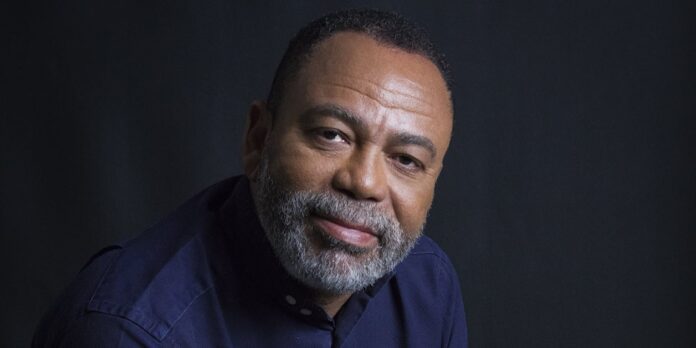Born in Gagnoa, son of a civil servant, Guillaume Koffi, 63 years old, lived a childhood without cuts or sketches, “normal”. He first did part of his studies in Bouaké before moving to Abidjan to pass his bachelor's degree. His father dreams of him as a pharmacist, but architecture comes naturally to him. “The school was next to the Hôtel Ivoire. So I already had references. I used to walk a lot around the Plateau, where there were chic windows in beautiful buildings… I also liked to walk around the Cocody neighborhood, to see the modern villas, and in Treichville, where my grandmother lived, for her workshops. »
Graduated from the Special School of Architecture in Paris in 1984, he worked for a few years at Jacques Labro's agency, Prix de Rome, known for having designed the Avoriaz (Haute-Savoie) ski resort. “But there were more needs in Côte d'Ivoire”, so Guillaume Koffi returned to Abidjan in 1985 and founded his own company in 1992. Seven years later, he inspired forces with one of his most talented employees, Issa Diabaté, to create the now famous Koffi & Diabaté agency.
Awarded at the World Architecture Awards in 2018, Guillaume Koffi, president of the order of architects from 2006 to 2014, is behind the creation of the first architecture school in Abidjan, “to guarantee its succession”. Very sensitive to environmental issues, close to the ecological concepts of the Brazilians Marcio Kogan and Isay Weinfeld or the Vietnamese Vo Trong Nghia, Koffi and Diabaté develop habitats and tertiary buildings designed and eco-responsible in the four corners of West Africa. , at Résidences Chocolat, in Abidjan, in the Ministerial City, in Cotonou. Meeting.
Jeune Afrique: How did you experience the summer weather that is coming to an end?
Guillaume Koffi: I am very worried, especially more that we will be the most affected by the negative effects of global warming. Drought, water cycle management, is obviously an issue that particularly affects Africa… Here we have a large deficit in sanitation infrastructure that the government is trying to resolve. In Abidjan, it was designed for 1.5 million inhabitants, and today there are almost 7 million. In Benin, there is also an ambitious sanitation program… Not to mention the energy challenge: I am from the generation that lived without air conditioning in the 60s, before these energy-intensive systems were widespread in public buildings….
It is urgent to think and find lasting solutions to all these problems. In colonial times, there were hospitals without air conditioning, as the architecture took natural ventilation into account. There are also references to traditional local architecture such as the Tata Somba, which, due to its rounded spatial organization and conical roof, promotes chimney effects for natural ventilation... This was also a source of inspiration for the design of the International Voodoo Museum, in Porto Novo , Benin.
The Chocolate Residences, which opened in 2016 at Riviera Golf in Abidjan, were already taking on the new challenges of urban development, including the rationalization of space and respect for the environment…
It was mainly a response to urban expansion. Given the price of the land, we wanted to be efficient in the use of the land and the pool comfort equipment, all within a sustainable architecture… smart city safe. It's a similar concept to Résidences Chocolat, but on a different scale. There were Cacau residences, with 6 villas, then Chocolat, with 32 apartments. Abatta Village already has 216 waits. Abatta II will include 600 additional homes… These are ecological neighborhoods, with a functional mix… Rainwater is stored and reused to irrigate green spaces, recycled waste and vegetation present in more than 60% of the area.
Do you have other projects of this type in progress?
We are currently working on the Ebrah project, a small lagoon village in Bassam commune. It is a village community-led project to transform the individual ambitions of landowners into a collective, safe and sustainable project. In this way, we avoid the massive sale of land and allow us to reconnect with urbanism, which is so lacking. But strong State involvement is necessary to reduce transfer costs for those eligible. It is a new and modern city, a great project for us that will allow different social classes to find housing. .
The Chocolate Residences, like Vila Abatta, are not very tall buildings. Are we to deduce from this that vertical architecture is no longer the future in Abidjan because it is not compatible with environmental concerns?
No, it's not necessarily contradictory, we have five to six-story homes to stay on a human scale and avoid the prohibitive maintenance costs of skyscrapers. It's true that Abidjan in the 1970s looked like a South American city with its concentration of high-rise, tertiary commercial buildings on the Plateau. Today, we must promote a functional mix of neighborhoods, which works with smoother mobility. Unfortunately, some decision makers still dream of a “Dubai in the tropics”. Personally, I don't like this type of urban planning. us let's fight for a green city on a human scale, with shared community spaces and equipment. Beauty does not necessarily translate in terms of verticality. We believe that the architectural solution must be able to benefit precisely from a low carbon tax.
The government of Côte d'Ivoire launched a vast plan to build social housing, why hasn't more been built?
We provide significant support to the social housing program in Ouèdo, Parakou and Porto Novo, Benin. Naturally, I would like to be able to participate more in social housing in Abidjan… We remain attentive and available to customers. It is also necessary to experiment with the densification of African cities within the existing urban fabric, preserving their cultural identity. But be careful, I am against the “Soweto” subdivisions that are all fragmented, that promote urban expansion and devastate African cities. It is necessary to prioritize intermediate housing, densify and stop urban expansion.
How do you see the recent evolution of Abidjan?
It is imperative to master it. At our level, we seek to professionalize its development with the examples of Chocolat, Abatta and Ebrah. It is true that a master plan was updated ten years ago by the authorities, but unfortunately the city is being built without architects and faster than one thinks... some neighborhoods are developing a functional mix of anarchic form, like Youpougon, they have their own business center and commercial, operate in a local authority… However, true professionals are needed to support this development and, in particular, to avoid accidents along the way, such as falling buildings. More architects and urban planners are needed to support this development, especially in public administrations, to lead the planning and control of urban development. We are not enough... There is a temporary collective consciousness, but for it to occur in a sustainable way, more local architects are needed.
Where do you live?
I live at Résidences Chocolat, and soon at Les Flamboyants, designed by Koffi & Diabaté and nearing completion. You know, the architect is first and foremost a social organizer... We even organize drinks between neighbors to discuss, in particular to discuss the problems of the residence... For example, when we designed Chocolat, we planned a large terrace so that the children could play. However, we didn't imagine that the residence's population wouldn't have small children... The space is empty, not a single child crying! So we are thinking about your conversion.
We are facing a society, and a population, in full mutation. Young couples live in the era of globalization. We have to offer connected spaces and this influences everything: the way of life, the way we… The kitchen, which was once the heart of the home in Africa, is now reduced to a trickle. People no longer go to eat at home for lunch, they eat foutou with delivery. The architect must follow this change, and it is a heavy responsibility. First, we produce architecture so that people feel good about it.
Thanks to agencies like yours, isn't Abidjan once again becoming the capital of modern architecture in Africa?
I hope we are helping to write this page of Ivorian architecture. We still don't have orders from other continents but we hope they will arrive... African architects based in Africa unfortunately do not benefit from the same publicity as African architects based in Europe... That doesn't stop me from saluting the singer for his remarkable work, which promotes emulation of young architects and creates vocations. They make us tolerant. For now, we are focusing on one Production local.

